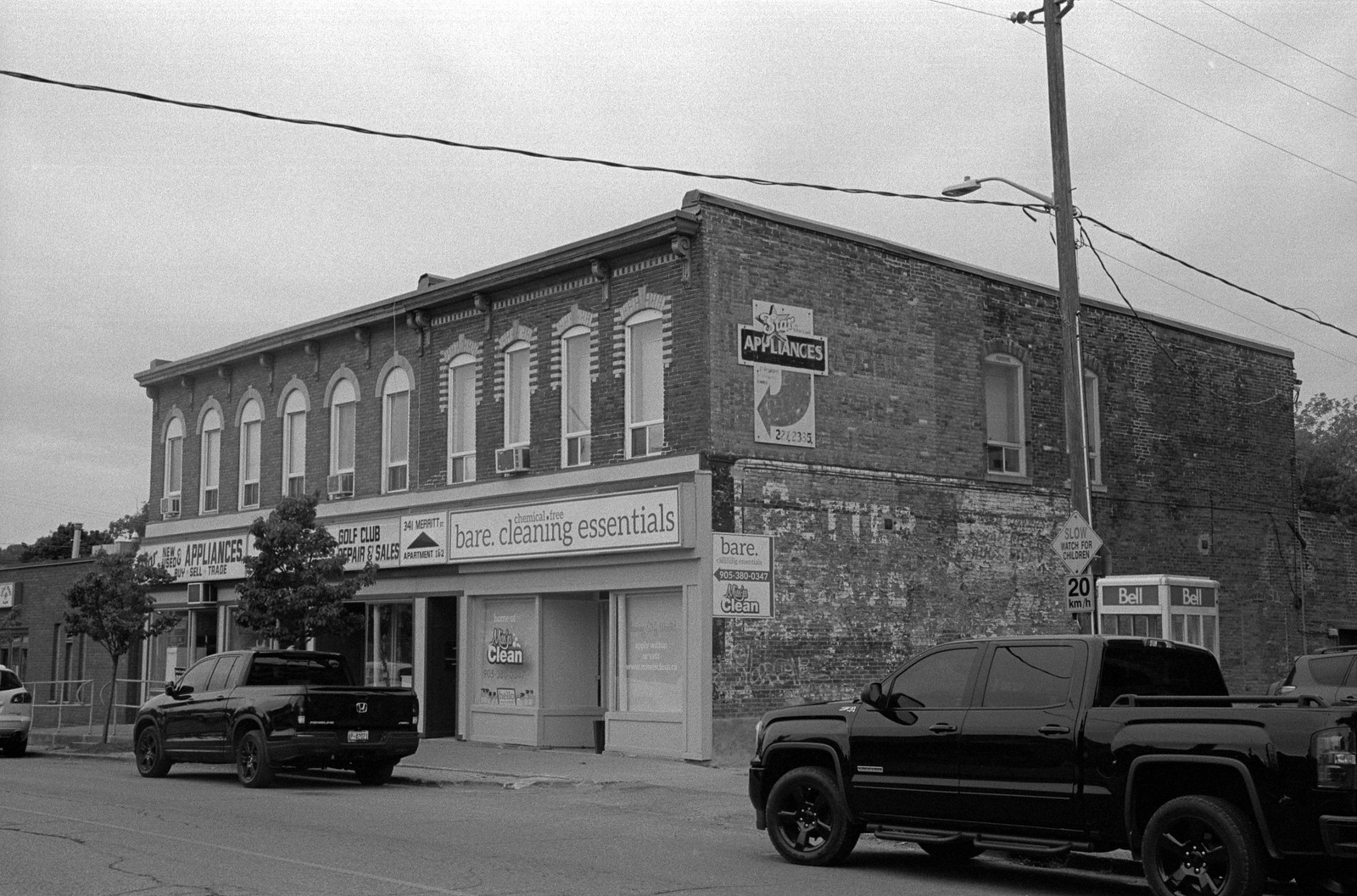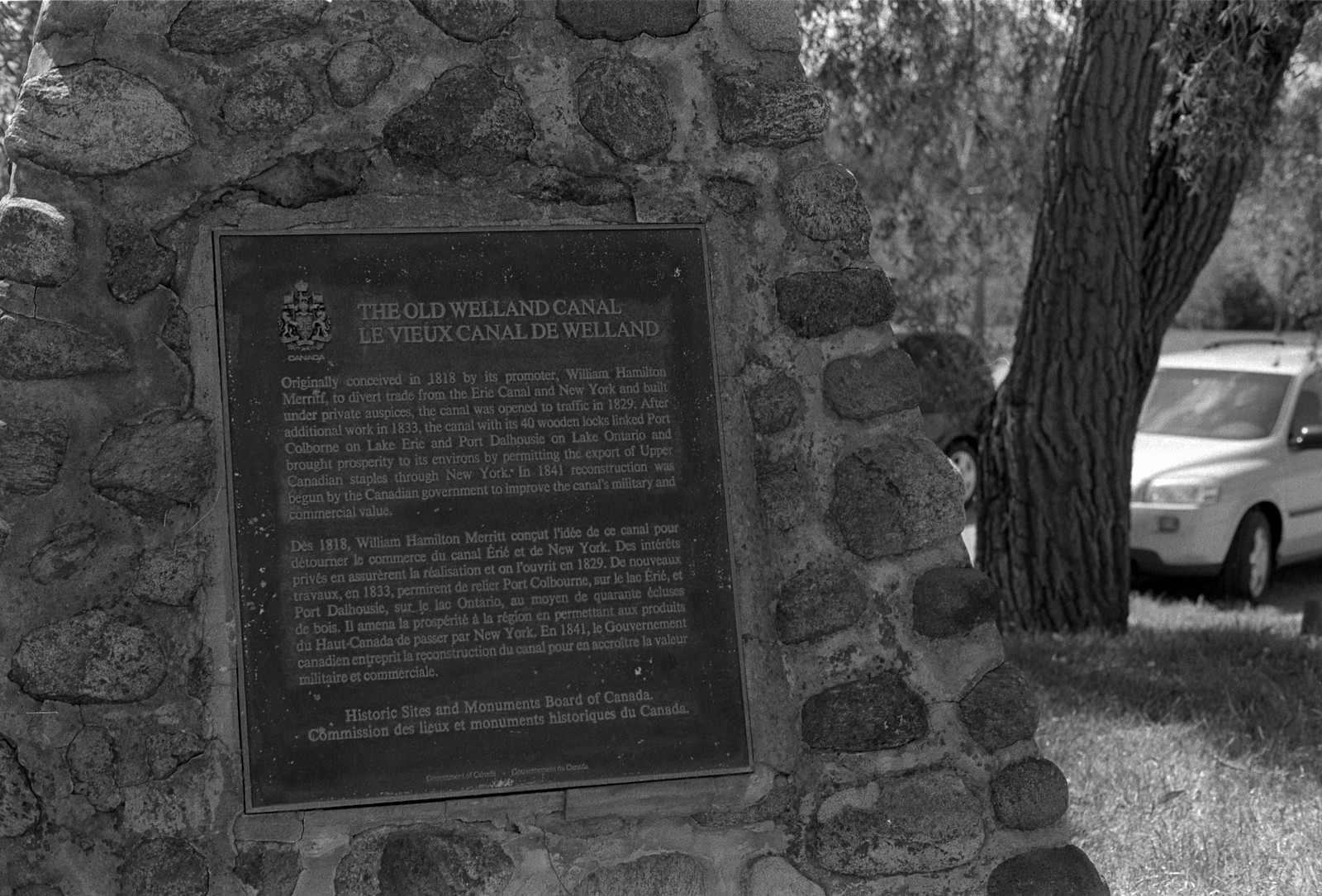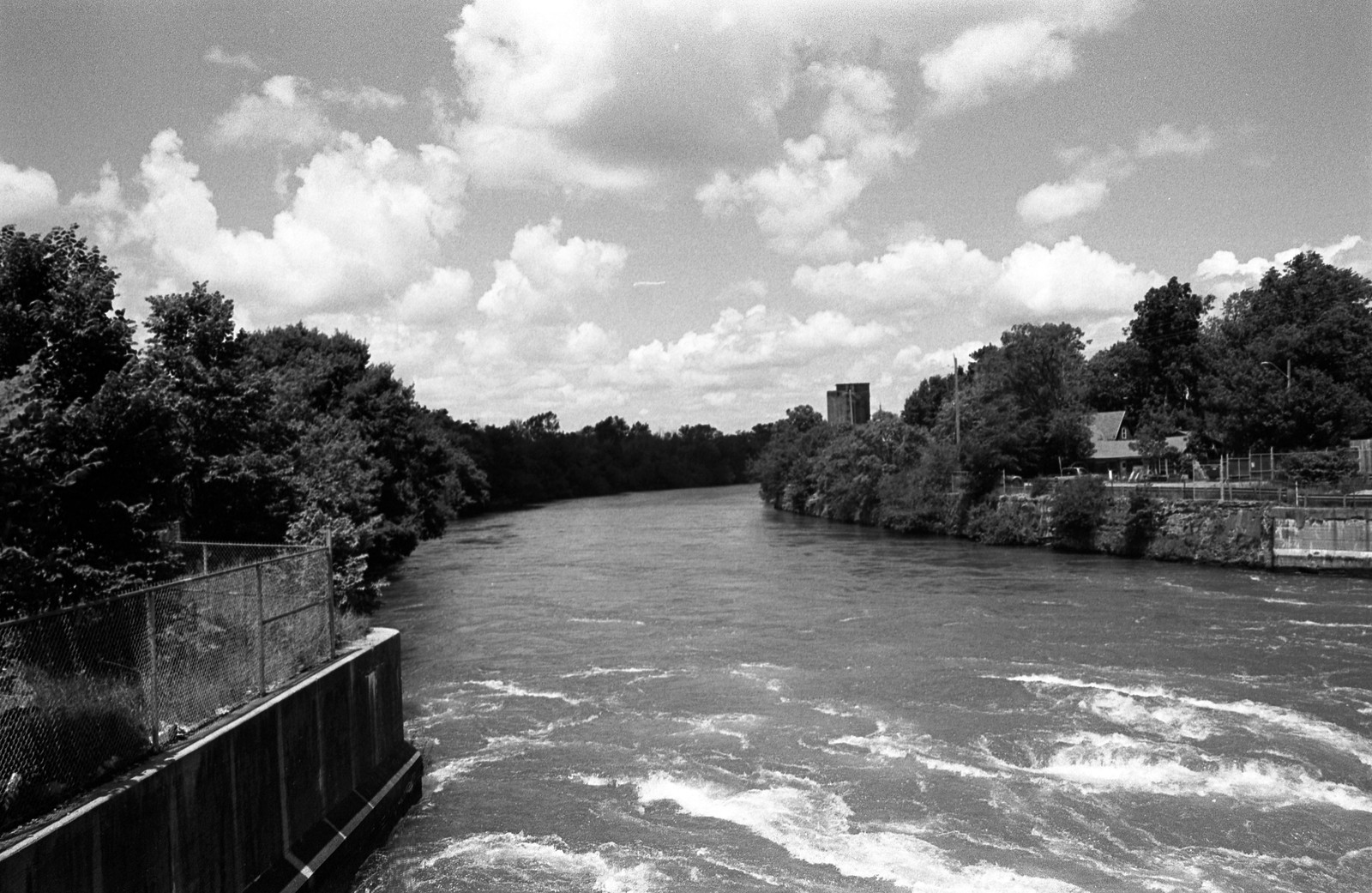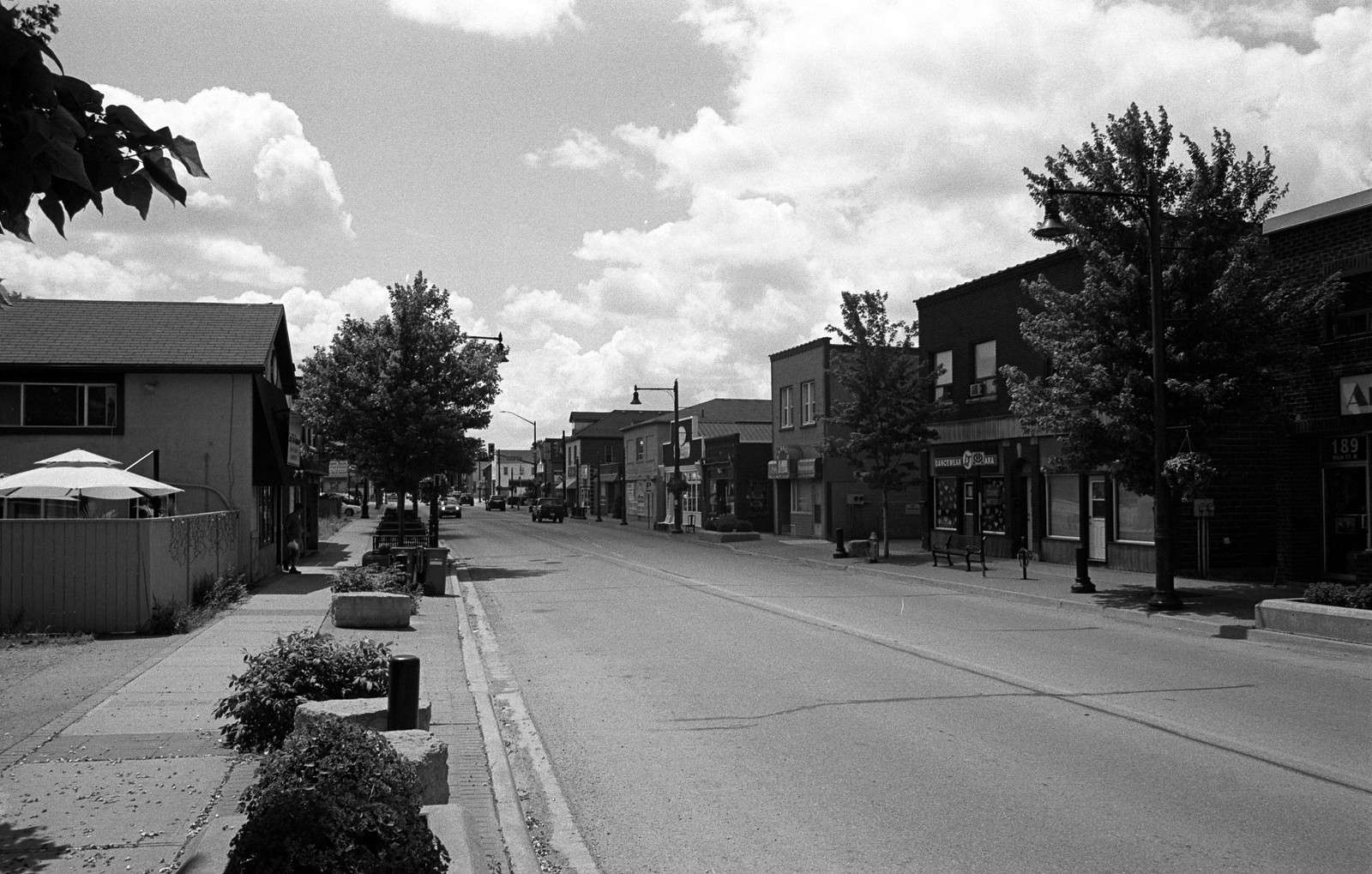The province that we know of as Ontario today looked a lot different some two hundred years in the past. There were no superhighways, factory outlets, or any major population centre every hour along the road. Trips were measured in days, not hours, and unless you were wealthy and in the merchant class, you rarely left your home settlement. The major cities numbered populations in the hundreds maybe thousands if lucky. And in Upper Canada (Ontario) the major centres were York (Toronto), Niagara (Niagara-On-The-Lake), and Kingston. The first major push to bring new immigrants into the backwater of Upper Canada was underway after the Anglo-American War of 1812 to better occupy the province to help boost the provincial defences. Thousands flocked to the newly obtained lands across the area. They were flocking to the properties that had some sort of water source. Water allowed for not only easy transportation but also the power to drive the slowly growing industry. These industries attracted both agriculture and raw material extraction and processing. And around these industries grew up more and new settlements. My home town came into being because of this expansion in the post-war era and fact, grew up around the same time that the Welland Canal construction started in 1824. The canal itself acted as a catalyst for urban growth; the canal offered both water power and transportation and the camps where the workers lived while on the project took on a life of their own. For the sake of the project, I have decided to divide up the settlements into three categories, today we’re going to explore the smaller communities. And later in the project, I will cover the big communities and finally the port communities.

Nikon FM2 – AI-S Nikkor 50mm 1:1.4 (Orange Filter) – Kodak Tri-X 400 @ ASA-400 – Kodak HC-110 Dil. B 4:30 @ 20C
Of all the small communities, the one that grew the largest and nearly achieved a major standing is Merritton. Like all the smaller communities, Merritton’s presence is thanks to the canal, and specifically the first change to move the route to the crest of the Escarpment away from DeCew Falls. If the canal had taken the original plan to use an incline railway at DeCew Falls to navigate the Escarpment, there might have never been the communities of Merritton or Thorold for that matter. The area around the mountain locks at the foot of the Escarpment started as four small shantytowns, the largest of these was Slabtown the others included Westport, Centreville, and Protestant Hill. These four remained small communities focused solely on the service of the mountain locks. Tow operators, small taverns, and lock keepers made up the communities. A few churches provided services for the communities and even a school for children. The area only saw some recognition with the construction of the second canal in the 1840s; it was here with the improved locks that the industrial potential in the area became known. The Mountain Locks used a lot of water and had turning basins, raceways, and weirs. After the second canal’s completion and the closure of the old canal’s channels and locks, mills quickly sprung up, at first mainly sawmills and grist mills. In 1846 the four settlements were incorporated as a single village, Welland City. A grand name for the small village, but the industrial might of the small village was not to be underestimated. The face of industry change when cotton mills arrived followed by rubber, paper, pulp, and carbide factories. Often many of the factories used locally produced machines from St. Catharines and Thorold. When the Great Western Railroad arrived on its push towards the Niagara River, it bypassed the clear choice of St. Catharines. Instead, it crossed the canal at Merritton in 1852, followed by the Welland Railway shortly after. In a strange twist, Welland City changed names with Merrittville in 1858. Merrittville, having been named the county seat for Welland County took the name Welland, while Welland City took on the mantel of honouring the canal’s founder became Merritton. But the village’s rapid industrialisation showed no signs of stopping and earned the nickname Factory Town. The 1870s brought further growth as Merritton, including incorporation as a town in 1874. Even after the opening of the Third Canal and closure of navigation between St. Catharines and Thorold on the second canal in 1881, the old canal continued to power the mills and factories of Merritton. The town became the focal point in 1887 of an interurban electric railway to help allow for a greater network of industries and workers between the growing canal communities. The electrical power did wonders allowing for larger factories and expansion of existing plants to build up the might of Merritton. War production drove the final days of Merritton’s golden age, and the post-war depression marked the end of many factories. Most factories closed in the late 1920s, only the old Lybster Cotton Mill (now a paper factory) saw continued operation. The final closure of the second and third canals left an ugly scar on Merritton. The old second canal had left a great deal of industrial pollution behind, and the town stank and was burdened with several industrial ruins. There was some light in 1952 with the opening of the General Motor’s factory sitting out near the third canal. But even that was not enough to save the town; it found itself under the jealous eye of St. Catharines to the east and Thorold to the west. St. Catharines would win out, thanks to county lines, and Merritton was dragged kicking and screaming into the city of St. Catharines. It did, however, kick start a great deal of urban renewal and clean up of the industrial waste culminating in the major projects of the early 2000s that saw many old factories restored and turned into modern commercial ventures.

Minolta Maxxum 9 – Minolta Maxxum AF 28-135mm 1:4-4.5 – Kodak Tri-X 400 @ ASA-400 – Kodak D-76 (1+1) 9:45 @ 20C
Minolta Maxxum 9 – Minolta Maxxum AF 28mm 1:2.8 – Kodak Tri-X 400 @ ASA-400 – Kodak D-76 (1+1) 9:45 @ 20C
Minolta Maxxum 9 – Minolta Maxxum AF 28-135mm 1:4-4.5 – Kodak Tri-X 400 @ ASA-400 – Kodak D-76 (1+1) 9:45 @ 20C
Minolta Maxxum 9 – Minolta Maxxum AF 50mm 1:1.7 – Kodak Tri-X 400 @ ASA-400 – Kodak D-76 (1+1) 9:45 @ 20C
Allanburg was little more than a roadside stop on the main road between Niagara and Amherstburg. A few loyalists settled there in the late 18th century and early 19th. There were some farms and the only business a simple tavern known as the Black Horse and named, according to legend, by a local leader from the first peoples of the region who rode a black horse. And while a minor stop along a road, the small community came into the public eye when it was selected as the starting point for the Welland Canal project in 1824. Workers flooded the community and houses sprung up over the first year as work began on the deep cut. By the time the canal project saw completion, the presence of the canal channel had offered up a home for several small mills and a shingle factory. It also saw one of the first domestic terrorist acts in Canada West, when men connected to the failed Upper Canada Rebellion attempted to blow up the lock located in the settlement in 1841. When the new canal saw construction rather than widen the original cut, a fresh cut was opened up, and this brought more workers into the community. The community provided a small shipyard for repair work and other canal related services. And while it was incorporated as a village in 1846 and looked as if it had a bright future it never expanded much. The arrival of the third canal and then the fourth canal diminished the communities importance. Even the Black Horse Tavern, despite its historical significance, could not be saved, it was demolished during the expansion of Highway 20 in the 1960s. Allanburg was absorbed into Thorold when it achieved city incorporation in the 1970s and today is little more than a bedroom community. It did get in the news, in August 2001 the MS Windoc collided with the lowering road deck of Bridge 11. While the bridge received little damage, the Windoc lost its wheelhouse and causing the ship to catch fire. Thankfully there was no loss of life, although the Windoc was a write-off.

Minolta Maxxum 9 – Minolta Maxxum AF 28mm 1:2.8 – Kodak Tri-X 400 @ ASA-400 – Kodak D-76 (1+1) 9:45 @ 20C
Minolta Maxxum 9 – Minolta Maxxum AF 28-135mm 1:4-4.5 – Kodak Tri-X 400 @ ASA-400 – Kodak D-76 (1+1) 9:45 @ 20C
Minolta Maxxum 9 – Minolta Maxxum AF 28mm 1:2.8 – Kodak Tri-X 400 @ ASA-400 – Kodak D-76 (1+1) 9:45 @ 20C
Minolta Maxxum 9 – Minolta Maxxum AF 50mm 1:1.7 – Kodak Tri-X 400 @ ASA-400 – Kodak D-76 (1+1) 9:45 @ 20C
When it comes to Humberstone, the name is more recognised as a township, not a town. The municipality saw settlement in the 1780s the two notable arrangements being Stonebridge and Gravely Bay. It was named after a natural bridge over the small creek that ran out into Lake Erie. When a post office was set up, the settlement took the name Peterburg, named from one of the earliest settlers in the area, Peter Nuff. It would increase and by 1817 considered the largest population centre in the Humberstone township. The small river offered space for a small mill and even though the arrival of the Welland Canal in 1833 and the choice of Gravely Bay (now Port Colborne) would change Petersburg fate. In 1851 it took the township’s name, changing the name to Humberstone as it earned village status. And even the Welland railroad made sure there was a stop in Humberstone. While it always stayed in the shadow of Port Colborne, it achieved a decent population and often became a haven for those looking for a small quiet community to live or run a business. Access to both the railroad and the canal helped things out. Robin Hood Flour opened up a new plant in the community during the Second World War and helped put the small community on the map, but also a target on the village. Unlike Merritton, Humberstone gladly accepted a merger with Port Colborne in 1952 as the two communities butted up against each other.

Minolta Maxxum 9 – Minolta Maxxum AF 28mm 1:2.8 – Kodak Tri-X 400 @ ASA-400 – Kodak D-76 (1+1) 9:45 @ 20C
Minolta Maxxum 9 – Minolta Maxxum AF 28mm 1:2.8 – Kodak Tri-X 400 @ ASA-400 – Kodak D-76 (1+1) 9:45 @ 20C
Minolta Maxxum 9 – Minolta Maxxum AF 28mm 1:2.8 – Kodak Tri-X 400 @ ASA-400 – Kodak D-76 (1+1) 9:45 @ 20C
Minolta Maxxum 9 – Minolta Maxxum AF 28mm 1:2.8 – Kodak Tri-X 400 @ ASA-400 – Kodak D-76 (1+1) 9:45 @ 20C
Today all three of these settlements still can be visited, but in some cases, they are hard to find as they have all merged with larger communities. Out of the three, Merritton maintains a strong streak of independence and enjoys having their representative on St. Catharines’ city council. The old mountain locks were restored and are now a part of Mountain Lock Parks and even remains of a first canal lock can be found there. Three 19th Century mills survive, Beaver Cotton Mill is now a Keg Restaurant, Lybster Cotton Mill is a boutique hotel and Italian Restaurant, and the Riordan Paper Mill is an automotive garage. The old town hall is a nursing home. Allanburg is little more than an incorporated suburb and bedroom community to Thorold. The only thing of note is the 1924 Historical Plaque marking the canal’s start. Humberstone again is a small business area to the east of Port Colborne proper. It does maintain some small family businesses and often left behind in favour of the more tourist-oriented Port Colborne downtown. Although each is important in the overall history of the area and makes for quieter places to visit, except Merritton, it is pretty busy.
Written With Files From
Jackson, John N. The Welland Canals and Their Communities: Engineering, Industrial, and Urban Transformation. University of Toronto Press, 1997.
Styran, Roberta M., and Robert R. Taylor. This Colossal Project: Building the Welland Ship Canal, 1913-1932. McGill-Queen’s University Press, 2016.
Styran, Roberta M., and Robert R. Taylor. This Great National Object: Building the Nineteenth-Century Welland Canals. McGill-Queen’s University Press, 2012.
Styran, Roberta McAfee, and Robert R. Taylor. Mr. Merritt’s Ditch: a Welland Canals Album. Boston Mills Press, 1992.
Jackson, John N., and Fred A. Addis. The Welland Canals: a Comprehensive Guide. Welland Canal Foundation, 1982.
Styran, Roberta M, et al. The Welland Canals: the Growth of Mr. Merritt’s Ditch. Boston Mills Press, 1988.